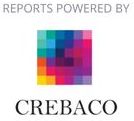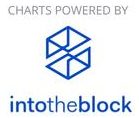
 Render Token
Render Token
Name
Render Token
Summary
RenderToken (RNDR) is a distributed GPU rendering network built on top of the Ethereum blockchain, aiming to connect artists and studios in need of GPU compute power with mining partners willing to rent their GPU capabilities out.
Render Token was first conceived in 2009 by OTOY and the project launched in 2017.
Render Token seeks to allow any 3D object or environment to be authored, shared, and monetized through blockchain protocols.
Rating
Symbol
RNDR
Overview
Render Token (RNDR) is a peer-to-peer network that aims to transform the power of GPUs into a decentralized economy of interconnected 3D assets. It was created to address the rapidly growing demand for increased scalability and efficiency for holographic media production. RNDR is an ERC-20 token that is used on the network for payments for animation, motion graphics, as well as VFX rendering.
The platform functions by allowing those with excess GPU compute power to offer their rendering power to those seeking to render digital artwork or other digital creations. In return for providing GPU power, RNDR tokens are given as payment. In this manner, the platform allows developers to capitalize on their idle GPUs and earn tokens via performing renders. The project hopes to substantially increase the scale and availability of GPUs for artists, designers, and researchers by capitalizing on dormant GPUs which are one of the most efficient pieces of hardware for rendering.
Historical Price Movement (in INR)
Technology
RNDR is an ERC-20 compatible utility token used to pay for animation, motion graphics and VFX rendering on the distributed RNDR Network, which is a peer-to-peer GPU compute network that connects creators in need of additional computation power for rendering their scenes, to providers that receive RNDR tokens for their GPU power. It allows complex GPU-based render jobs to be distributed and processed on a P2P network, making the transactional process of rendering and streaming 3D environments, models, and objects simpler for end users.
Render uses a unique Proof-of-Render mechanism in order to verify transactions. Proof-of-Render is a combination of manual and automatic Proof-of-Work. This process involves verifying the given artwork is rendered appropriately before releasing the agreed funds for the rendering and the rendered artwork.
The RNDR Network: Coordinates and facilitates the supply and demand for render jobs using smart contracts. It automatically allocates the render jobs across nodes and perform the payments for the services;
Node Operators: Provide computing power to perform the render jobs and are paid by the network in RNDR tokens. Node operators can join the network using a desktop client, and then receive unique ID that will be linked to the wallet. Joining the web, the network can determine benchmark information that will be used to better allocate the resources.
Creators: The final users of the network. People in need of computing power to perform render jobs, which is achieved by connecting to a web interface, linking a wallet and selecting the job preferences. As soon as the work is processed, the user confirms that the output was generated and pays the fees.
Dual Operators: Users who play the role of node operator and creators. Usually sell to the network idle GPU power when not using their hardware to accumulate RNDR that can be used when in need of extra computing power to run a job.
Use of Native tokens in the ecosystem:
RNDR is the native token of the project. RNDR is the utility token used to pay for animation, motion graphics, and VFX rendering on the distributed RNDR Network.
RNDR Phases
40%
Network Development
25%
Marketing, Expansion
19%
Unforseen Roadblocks
4%
3rd Party Services
10%
Volume ( as of 9th May 2022)
$8,493,726
Total Supply
530,962,614 RNDR
Circulating Supply
253,798,859 RNDR
Crowd Sales
21-12-2021-ICO- $30M
Funding
na
Country
United States
Name of Organisation
OTOY, INC.
Year Incorporated
2010
Registered Address
1010 WILSHIRE BOULEVARD, SUITE 1604 LOS ANGELES CA 90017 United States
Dispute Resolution and Governing Law
United States
Country Risk Assessment
A1
Founding Team
| Name | Designation | Education | Experience |
| Jules Urbach | Founder | - | 20 yrs |
| Charlie Wallace | CTO | University of Central LancashireBS, Computer Engineering, Electronic Engineering | 29 yrs |
| Trevor Harries-Jones | COO | SAICACA (SA), Accounting and auditing | 25 yrs |


 Render Token
Render Token










